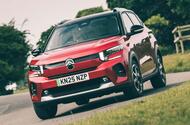Our time with the French brand’s electric supermini is up – here’s our verdict
From the MG 4 to the Renault 5, the small electric car is all of a sudden in vogue. Battery technology has at last started to become more cost-effective and it seems that some manufacturers have finally cracked the code to bring electric power to the masses in a more compact package, rather than in the form of a great big SUV.
It’s these two areas – cost and compactness – in which our fleet’s new arrival will appeal most, its wallet-friendly price being the headline-grabber here.
Starting from £22,095, the Citroën ë-C3 is the latest affordable new small EV to emerge from the Stellantis stable. It’s positioned comfortably among the UK’s top 10 cheapest electric cars, ahead of key rivals such as the small car du jour 5 (£22,995), the quirky new Hyundai Inster (£23,505) and the recently updated Vauxhall Corsa Electric (£26,170).
The ë-C3 is based on Stellantis’s value-focused Smart Car platform, which can house both electric and combustion powertrains and is shared with the C3 Aircross, Fiat Grande Panda and Vauxhall Frontera. My test car has a single, front-mounted electric motor producing 111bhp and 92lb ft.
Energy is supplied by a 44.2kWh lithium-iron-phosphate drive battery with an almost entirely usable capacity of 43.7kWh. That’s good for a claimed 198 miles, which compares favourably with the 5’s smaller-battery Urban Range model (its 40kWh pack returns 190 miles). My car’s charging speed is rated at 100kW, beating both the Inster (73kW) and 5 (80kW).
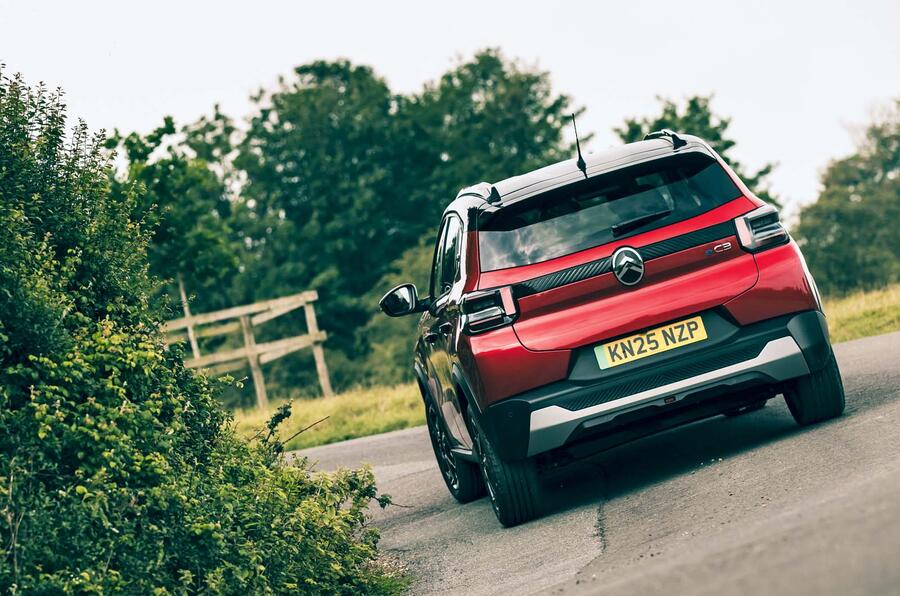
The ë-C3’s on-paper performance is also competitive, if not exactly compelling. It will canter from 0-62mph in 10.4sec, according to the promotional literature, or a full second slower if you ask our road testers.
Still, it’s about what you would expect for this kind of car at this kind of price. More importantly, driving the ë-C3 in town – where these Citroëns will typically do most of their business – so far has been an absolute breeze, helped by its 10.6m turning circle.
Its dinky dimensions haven’t been noticeable inside, though. A height increase of 107mm compared with the previous generation’s combustion-powered C3 is offset somewhat by the underfloor battery but still makes the cabin feel spacious in both rows, especially in terms of head room up front.
At 310 litres, the boot may not be the largest in the supermini class, although it seems to have found favour with my colleagues, who have already loaded it with detritus for trips to the tip and bags and coats for family outings.
No doubt my car being specified in the higher of two trim levels, Max, helped matters. Among the niceties are a wireless phone charger, black exterior design features, a winter pack that brings heated front seats, a heated steering wheel and a heated windscreen, and a visibility pack that includes automatic wipers and automatic LED headlights.
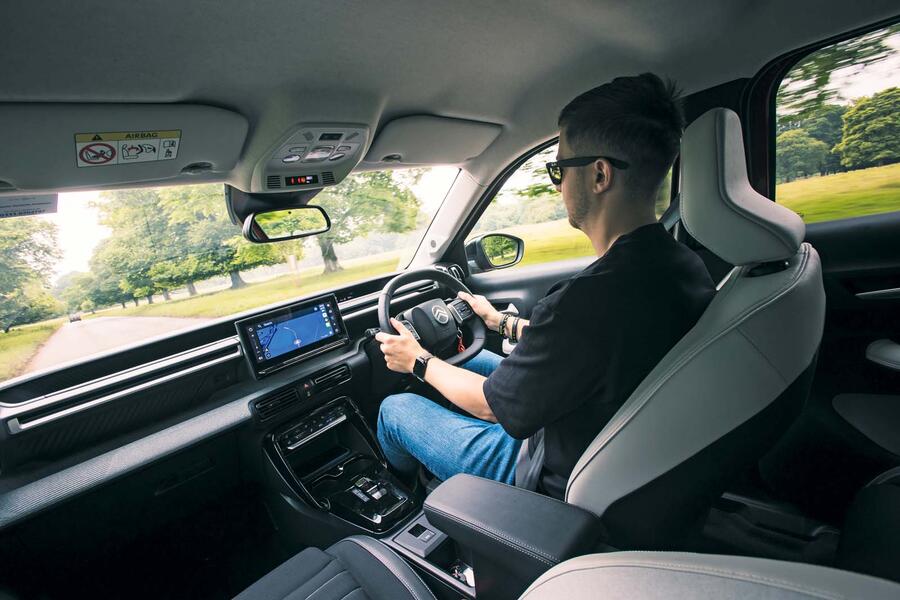
To navigate these features there is a crisply rendered 10.3in infotainment touchscreen, as well as plenty of physical buttons and steering wheel controls. Importantly, there are also a few easy-to-reach buttons to switch off the driver assistance systems.
What will immediately stand out to prospective buyers is the oblong-shaped steering wheel, which I’ve so far found difficult to grip and awkward to turn in sharper corners.
It’s paired with a digital dashboard that displays key information such as the speed limit, how fast you’re travelling and the remaining range. It’s not all that customisable, but it is at least easy to read.
Essentially Citroën’s version of the divisive Peugeot i-Cockpit, this C-Zen Lounge is quite aptly named. With plush and supportive seats, and little road noise or electric motor whine intruding into the cabin, it’s a calming, comfortable place to be.
Whether the sense of tranquillity will be further enhanced by the small motivational messages woven into the armrests, I’m not so sure. ‘Be Cool’, one says. ‘Have Fun’, says another.
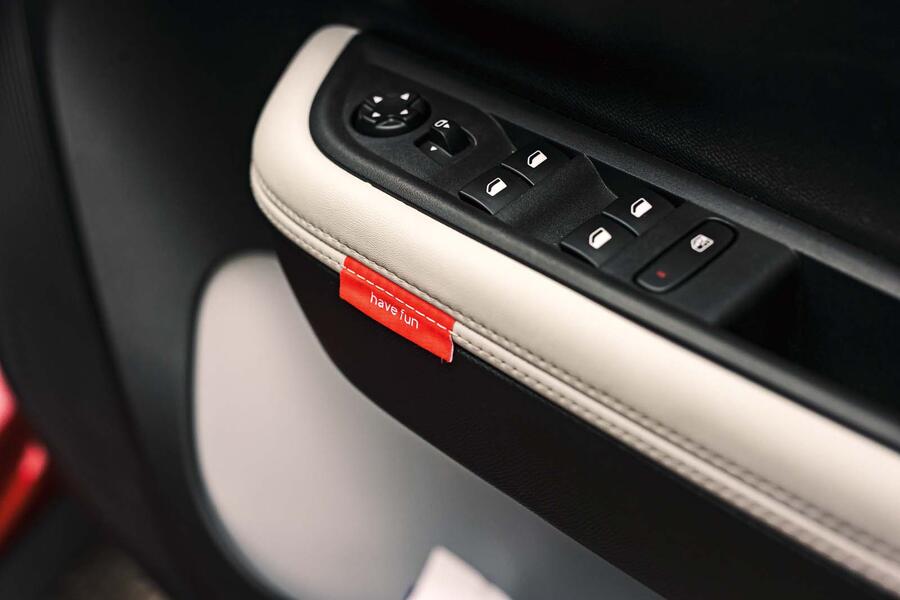
These reincarnated Love Hearts just seem somewhat frivolous. Unnecessarily so, since the ë-C3 already has proper things to shout about, not least a usable daily range, enough power to satisfy most target buyers and plenty of room inside.
Whether the car can deliver on its promises – can it really make me ‘Feel Good and Be Happy’? – is what I will be tracking in the months to come, with an especially close eye on how efficient it proves.
Real-world miles per kWh, particularly during extended motorway driving, has been a slight stain on several of this car’s rivals, not excluding the 5.
Let’s see if my own small French EV defies the trend and excels beyond city limits.
Update 2
While car styling will always be subjective, few models on our long-term fleet have inspired a more diverse set of opinions than the Citroën ë-C3. Not all of them have been positive, with one member of the team describing our small electric car as “not exactly a looker” and another rating it as “a solid 6/10”. High praise indeed…
All balderdash, in my view. I happen to rather like the way this little hatchback looks, and while it might not be as effortlessly beautiful as some of Citroën’s greatest hits (it’s unlikely to ever be mentioned in the same breath as the SM or the original DS), the substance that owes itself to the style is why I’m starting to enjoy the ë-C3’s so much.
The new design means Citroën’s supermini is a more practical option than before, with a boot measuring 10 litres larger than in the old (ICE-only) car. It’s also 20 litres more voluminous than the Hyundai Inster’s boot, albeit 26 litres down on the Renault 5’s.
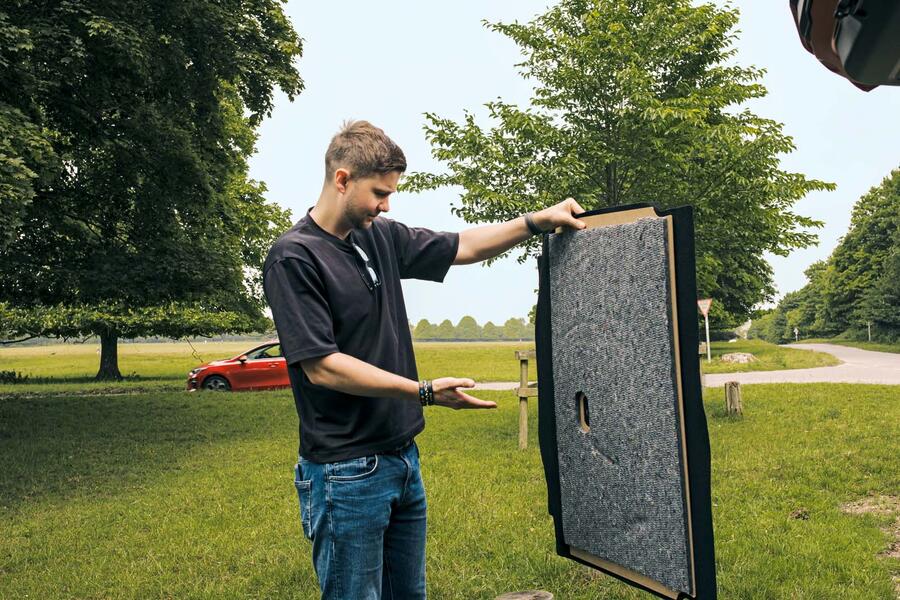
A slight disappointment is the lack of a frunk, which you’d think the ë-C3’s body shape would be perfect for. That said, there are plenty of storage compartments around the car for my needs, plus the rear seats fold down in a 60/40 split, adding extra useful space.
The car’s boxy silhouette also means it’s more spacious for both the driver and passenger. At 6ft 2in tall, I can sit comfortably in the front with no chance of bashing my head on the roof, and I can stretch my legs out fully with someone sitting behind me.
There’s enough room for two average-sized adults in the rear, too. Both of my parents sat happily enough back there, but try to squeeze in a third person and things start to feel claustrophobic.
One issue is the ë-C3’s load lip, which proved awkwardly high for our ageing dog, who wouldn’t even attempt to climb in.
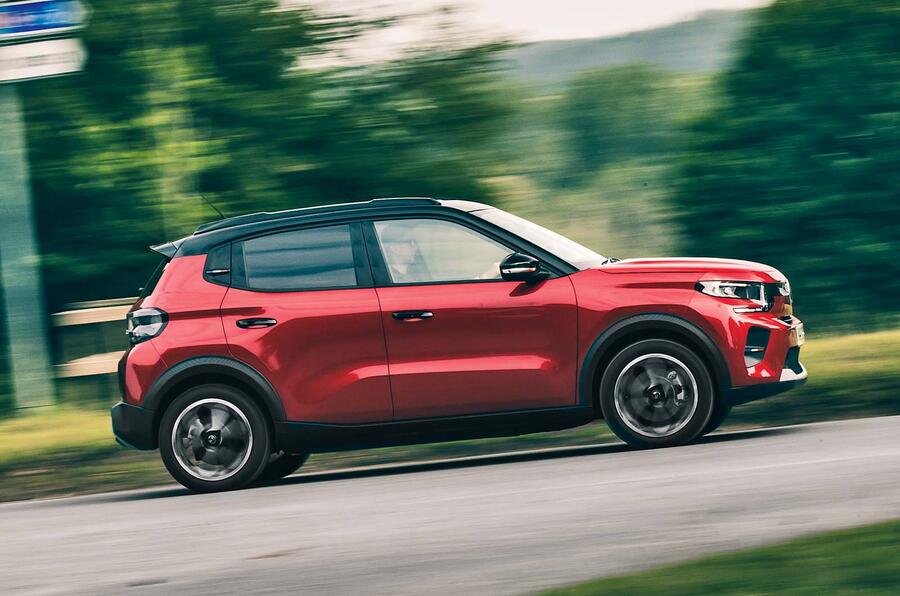
Also, the removable boot floor, which covers a recess only just large enough for the charging cable, doesn’t appear to be entirely secure, due to thin materials – perhaps one way Citroën has kept costs down.
Closer examination revealed it to be nothing more than a piece of wood with fabric attached. I do wonder how this flimsy item will cope with heavier cargo and plan to find out on an upcoming holiday.
I will give the ë-C3 a pass for now, though, because otherwise it is fulfilling its brief as a well-rounded, practical small electric car.
Update 3
Life with the ë-C3 has been relatively trouble-free during my first 3000 miles – but it hasn’t been without a few frustrations.
My main gripe revolves around one important omission: there’s no in-depth trip computer. This means there are no efficiency readings and no economy figures. Plus, when the car is plugged in, there’s no indication of charging speed, just the remaining time left until a full battery. There’s no menu for this in the touchscreen either.
This seems odd and regularly frustrates me as someone who keeps a meticulous eye on my car’s efficiency. I thought I might be missing something obvious, but clicking through the screen using the toggle on the end of the indicator stalk didn’t help either.
So I contacted Citroën about it and a spokesperson confirmed that “energy consumption is not currently available” in the ë-C3 but it “will be added later in the year with the latest software generation”.
That’s good news, but it’s strange to me that it wasn’t included from the outset, given that Citroën’s other electric models – the ë-C4, ë-C4 X and ë-Berlingo – all provide economy readings.
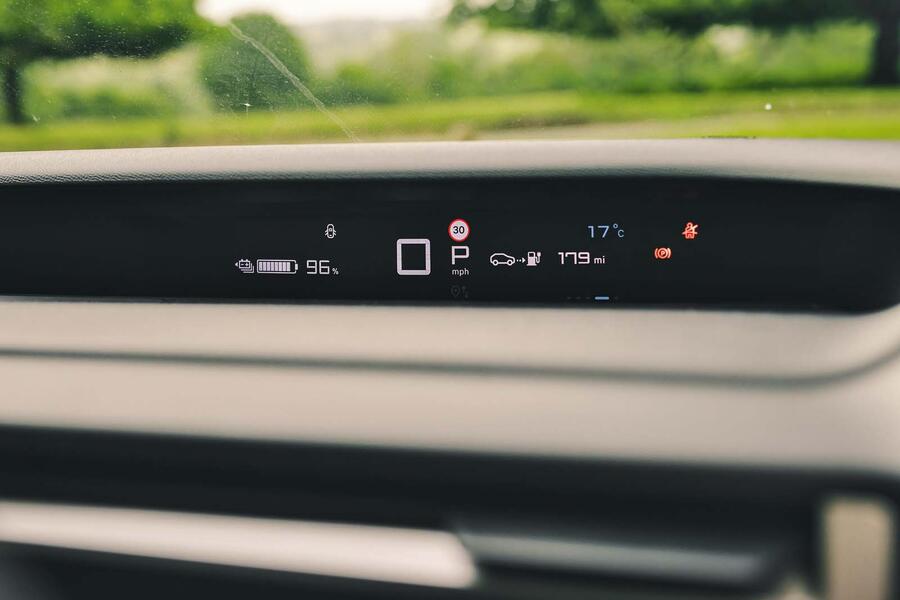
For now, the only source of vehicle data is the digital head-up display, which shows vehicle speed, overall mileage and remaining range. This makes working out efficiency – and how quickly or not I’m chewing through the potential range on the go – a tedious task.
How can you truly plan a long-distance journey if you don’t know how many miles you’re getting from that dinky 44kWh battery?
I’ve been nearly caught out a few times, due to the combination of a lack of data and the ë-C3’s disappointing cruising economy. One time, I started a 65-mile drive with an 126 miles of range displayed on the digital dash and arrived with just six miles remaining.
I’m used to running electric cars down to a low remaining range, but that journey needn’t have been so tense. As far as I was aware, I had almost twice the range I needed, which should have been enough of a cushion to travel without worry.
Whipping out my calculator, I worked out that the ë-C3 had averaged just 2.8mpkWh over the journey, which had involved a mixture of motorways and A-roads.
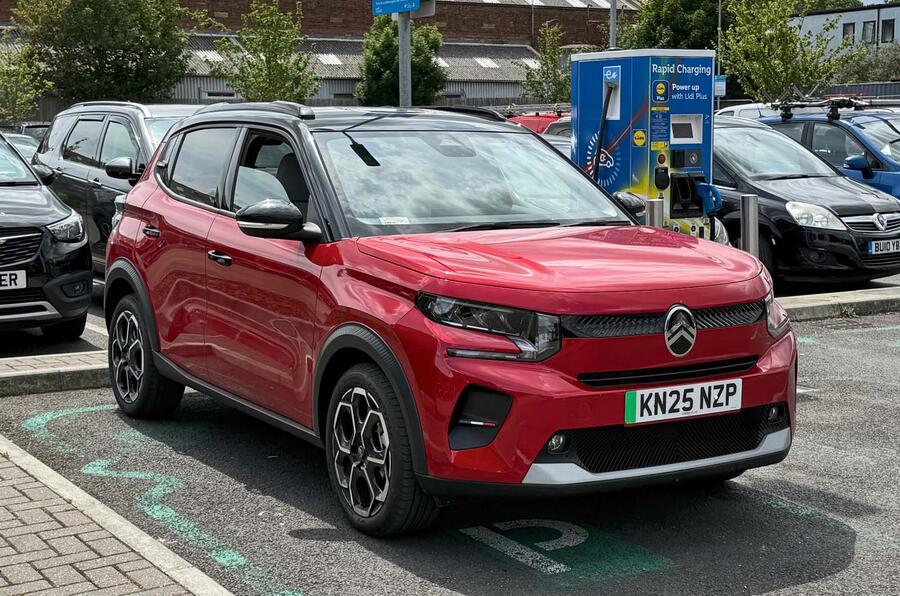
That’s identical to our road test figure and significantly poorer than the Renault 5 achieved (3.1mpkWh). It indicates a real-world range of just 129 miles. Plus, that journey was done without a puff of energy-sapping air conditioning.
While I’m not too impressed with the ë-C3’s cruising economy, efficiency is far better in town. In fact, the ë-C3 is proving to be a brilliant urban runaround and regularly achieves around 4.5mpkWh, which translates to a range of 199 miles. That’s bang on Citroën’s claimed WLTP range, although my overall average is hovering around 3.3-3.6mpkWh.
And there’s another reason to be cheerful: MFG is due to open a new forecourt with four fast chargers within half a mile of my flat. That should mean I can finally take advantage of the ë-C3’s 100kW charging speeds and worry far less about my rapidly depleting range.
Is our electric Citroen C3 better than the hybrid?
Final report
Our time with Citroën’s smallest car has come to an end after around 2500 miles, and in that time I’ve learned a lot about this electric supermini.
Given we have had a relatively balmy summer, the conditions couldn’t have been better for a small EV such as the ë-C3 to thrive and really make a case for itself among an increasingly large pool of rivals.
Much like parts of the summer we’ve just enjoyed, the competition couldn’t be hotter for the ë-C3 right now. There’s the BYD Dolphin Surf, Hyundai Inster and, of course, the Renault 5, which is already considered by many to be the benchmark small EV.
There’s also competition in-house at Stellantis, with the Fiat Grande Panda and Vauxhall Frontera set to keep the ë-C3 on its toes when they arrive later this year.
After our time together, my feelings about the ë-C3’s departure are mixed. Don’t get me wrong: there is a lot to like about this budget package. But ultimately it didn’t quite suit my lifestyle and there were some glaring flaws.
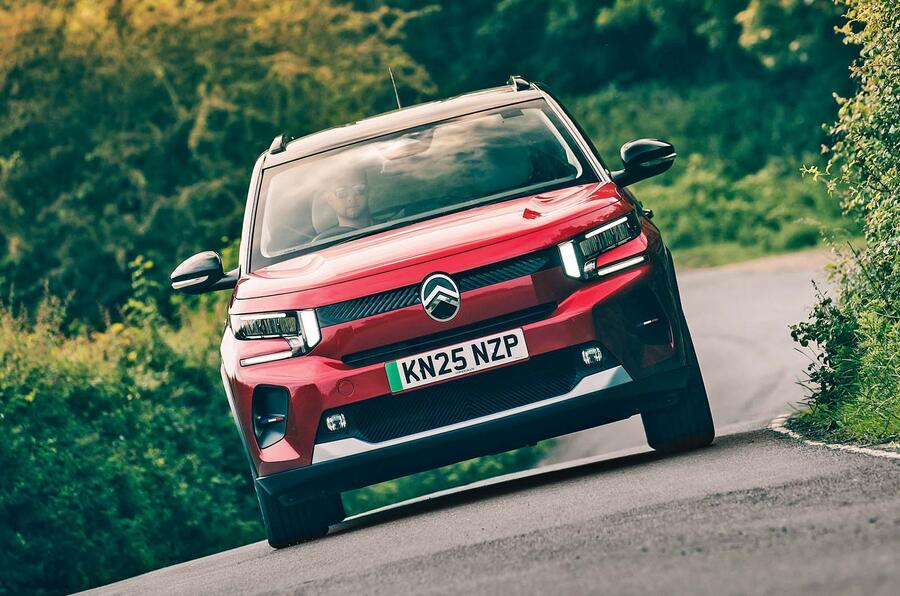
Let’s start with the good bits. There was ample interior space, with head and leg room in both rows a real plus point. The Citroën’s boxy silhouette meant passengers didn’t struggle for room and, at 310 litres, the boot was a usable size and shape too.
The standard equipment gave me everything I needed, with wireless phone charging, automatic wipers, LED headlights and wireless Apple CarPlay – all features I enjoyed using every day (aside from the wipers, which sat out most of the summer).
These features’ controls were all easily accessible, as were the climate controls, an easy reach away below the infotainment system. The heated seats, heated steering wheel and heated windscreen didn’t get much of a workout, but all three would make frosty mornings much more bearable.
Driving the ë-C3 was largely easy and trouble-free. Its 111bhp electric motor was enough for most situations, but naturally it struggled when asked for intense bursts of power above 60mph. The Citroën was excellent in town, able to weave around parked cars and slot into parking spaces more easily than any other car I’ve driven.
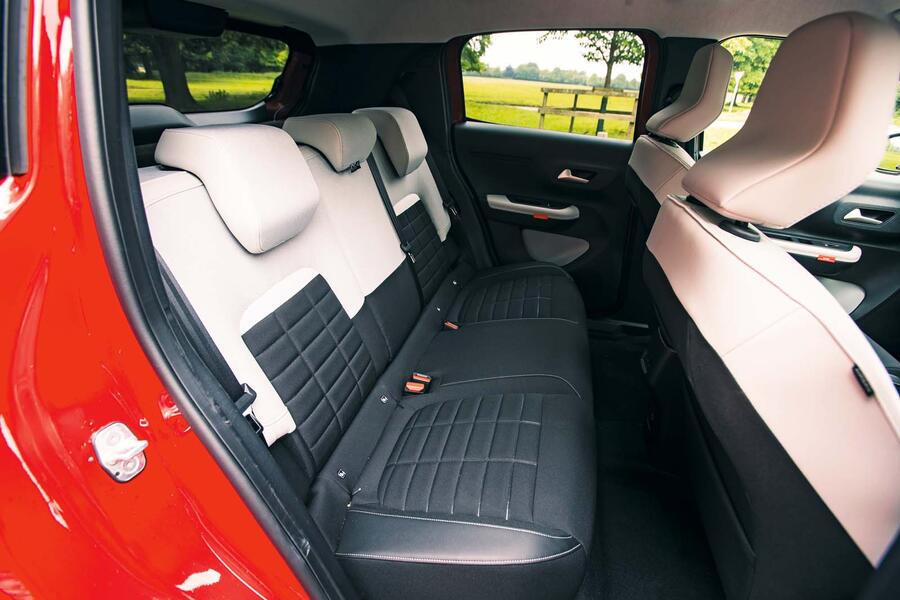
Ride comfort was also pretty good. The ë-C3 handled most bumps with aplomb and rarely crashed over larger potholes, and it acquitted itself well when tackling the more unsettled roads of rural west Berkshire.
Importantly, its ADAS features were among the least intrusive and stress-inducing I’ve used for some time. The lane keeping assistance and speed limit warnings are, as usual, on by default when you start the car, but I rarely noticed them, despite being notified when they kicked in via a small light on the ë-C3’s digital screen.
Unfortunately, a few things held the ë-C3 back. The most significant of those was efficiency, which varied massively between competitive and woeful, depending on the type of driving.
Over three months, the best I saw was a fairly creditable 4.5mpkWh, achieved along a route that was almost entirely at town speeds below 30mph. That equates to a range of 197 miles from our car’s 43.7kWh battery – in line with Citroën’s advertised claims.
Yet when driving home to see family – a journey of around 70 miles along a mix of motorways and A-roads – I’d regularly see no more than 2.9mpkWh. That’s equal to just 127 miles of range, even in optimal conditions of 25-29deg C.
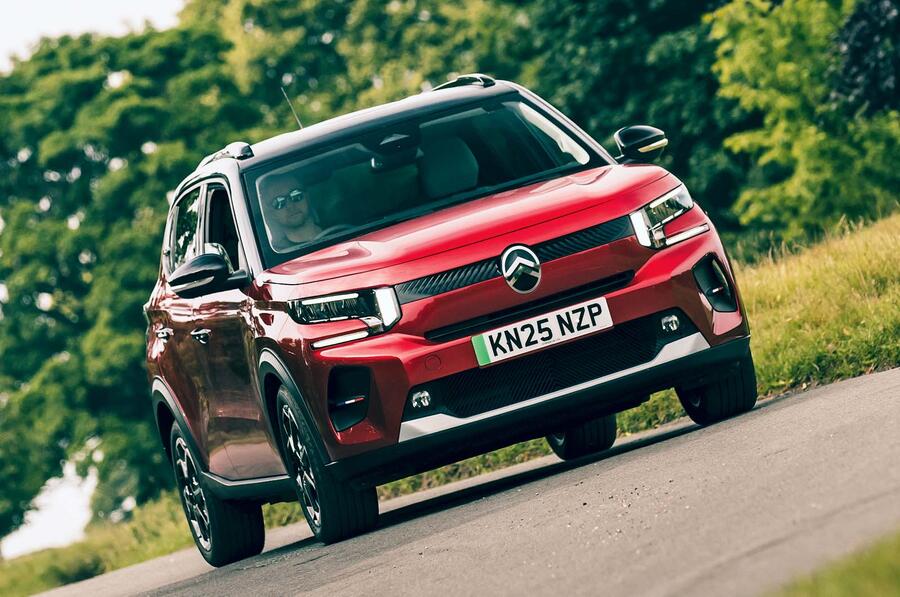
You expect faster depletion of the battery on quicker roads, but dealing with such a shortfall in efficiency is made all the harder because the ë-C3 still lacks a trip computer to display its economy figure.
All it shows is a rapidly dwindling range indicator, making longer trips harder to manage than they need to be. This was offset slightly by a decent claimed charging speed of 100kW, although I never saw more than 86kW.
Another feature notable by its absence was any form of brake energy regeneration control. A mild level of regeneration is there by default, but there’s no option for one-pedal driving.
It was missed when driving through town, and the only level of adjustability was the Cruise mode, which reduces high-speed regen to make for smoother driving on faster roads.
I also didn’t fully bond with the ë-C3’s almost oblong steering wheel. It was easy enough to turn in most cases but awkward in tighter corners, and generally I struggled to grip the darn thing.
The Renault 5 and Dolphin Surf are much more accommodating in this regard, although you could say the same for anything with a regular circular steering wheel.
Despite its shortcomings, though, the ë-C3 is a characterful little electric car with bags of personality. It was a regular talking point among friends, family and members of the public, many of whom admired its packaging and styling.
But our original reason for running this electric Citroën supermini was to find out if it was a match for the class-leading Renault 5. So is it? The 5 is more well rounded in terms of refinement and driver engagement, but the ë-C3 still scores highly in many areas.
It might not match its fellow French rival for all-round ability, but it certainly does for charm.
Citroën ë-C3 44kWh Max
Prices: List price new £23,795 List price now £23,040 Price as tested £24,490
Options: Elixir Red paint with black roof £695
Fuel economy and range: Claimed range 199 miles Battery 44.2/43.7kWh (total/usable) Test average 3.4mpkWh Test best 4.5mpkWh Test worst 2.8mpkWh Real-world range 149 miles
Tech highlights: 0-62mph 10.4sec Top speed 84mph Engine Permanent magnet synchronous motor Max power 111bhp Max torque 92lb ft Gearbox 1-spd reduction gear, FWD Boot 310 litres Wheels 7.5Jx17in Tyres 205/50 R17 93V, Goodyear EfficientGrip Performance 2 Kerb weight 1416kg
Service and running costs: Contract hire rate £235 pcm CO₂ 0g/km Service costs None Other costs None Fuel costs £205 Running costs including fuel £205 Cost per mile 8 pence Faults None
Source: Autocar
